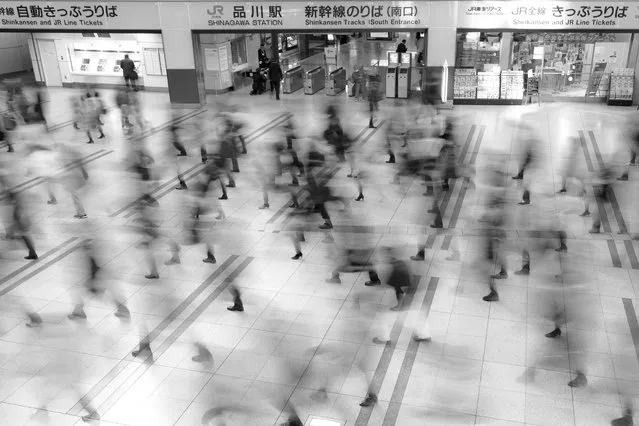
“Shinagawa Station”. I was up at an ungodly hour to make it to the Tsukiji Fish Market, in Tokyo. With so many amazing things to see in the city, I had hardly slept, and managed to get off at the wrong station. Wave after wave of people kept coming through the station passageway. I spied a coffee shop with a vantage point and managed to snap a free shots, camera resting on the ledge. After the caffeine kicked in, i was ready to brave the river of people... Photo location: Tokyo, Japan. (Photo and caption by Peter Franc/National Geographic Photo Contest)
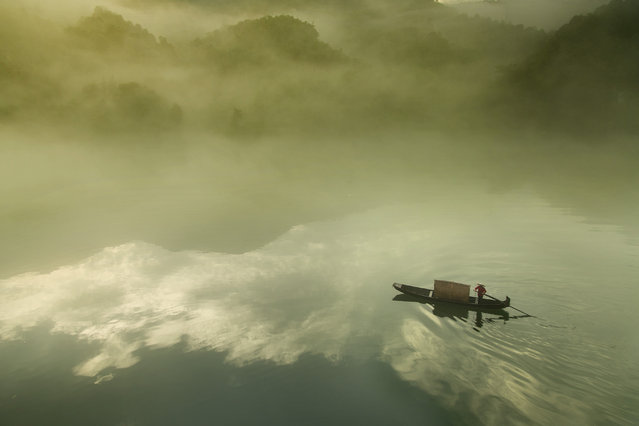
“The draw”. The boat drawing in the morning fog. Photo location: Chenzhou, China. (Photo and caption by Lo Daniel/National Geographic Photo Contest)

“Happy to Perform”. Kindergartners make their way to the stage of the P.S./I.S. 89 school stage for a holiday performance. Photo location: New York City. (Photo and caption by Carl Glassman/National Geographic Photo Contest)

“The joy of tea and companion”. I travelled to Chengdu, China last spring and encountered this group of elderly men enjoying their tea time in a traditional tea house. Photo location: China. (Photo and caption by Seng Huat Phua/National Geographic Photo Contest)
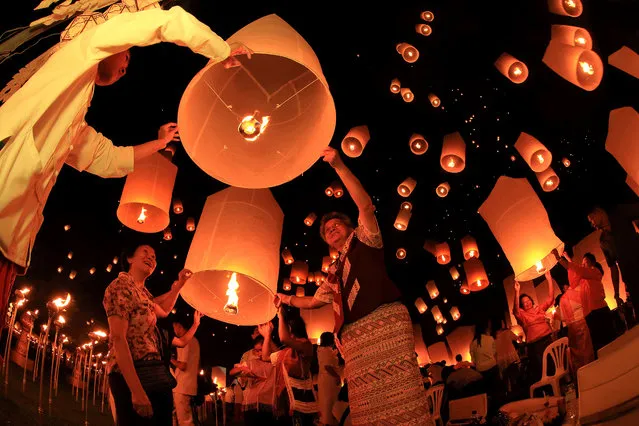
“Prayers in the sky”. A sky lantern, also known as Kongming lantern, is a small hot air balloon made of paper, with an opening at the bottom where a small fire is suspended.In ancient China, sky lanterns were strategically used in wars. These lanterns were subsequently incorporated into festivals in Asia. This photo was taken in Chiang mai during Lanna Yi Peng festival which meant ss a time to obtain Buddhist merit. Photo location: Chiangmai, Thailand. (Photo and caption by Seng Huat Phua/National Geographic Photo Contest)

“DC3 Wreck”. A capture of a US military DC3 plane wreck at the southern black beach in Iceland. Photo location: Iceland. (Photo and caption by Naian Feng/National Geographic Photo Contest)

“Mother and her baby”. My friend's mother suffered a severe stroke a few months back. Now wheel chair bound and barley cognizant. My friend is exhausted balancing caring for his mom and his own career and family. This role reversal has become common place as baby boomer ages, and modern medicine pushes back the grim reaper. But the quality of this extended life often doesn't live up to expectation. Part of the series on care givers. Photo location: Princeton, New Jersey. (Photo and caption by Brian Yen/National Geographic Photo Contest)
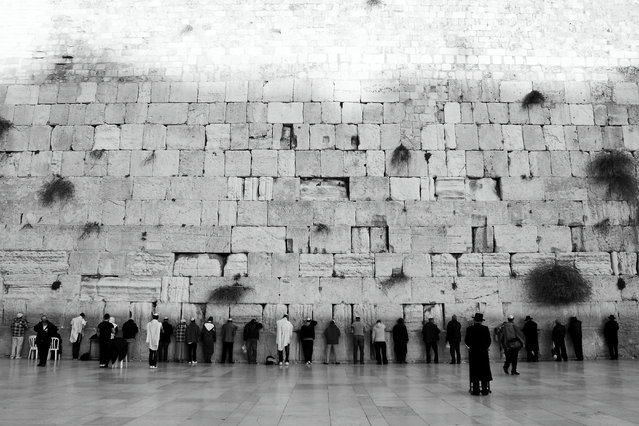
“Western Wall”. Western Wall symbolise the root of Jewish, the last parts of the wall are remnants of the ancient wall that surrounded the Jewish Temple's courtyard. Herod the Great builded western well around 19 BC. Now here is Jewish holy centre. Jew come and pray for tiny peace in this unstable world. Photo location: Jerusalem, Israel. (Photo and caption by Everflood Xie/National Geographic Photo Contest)
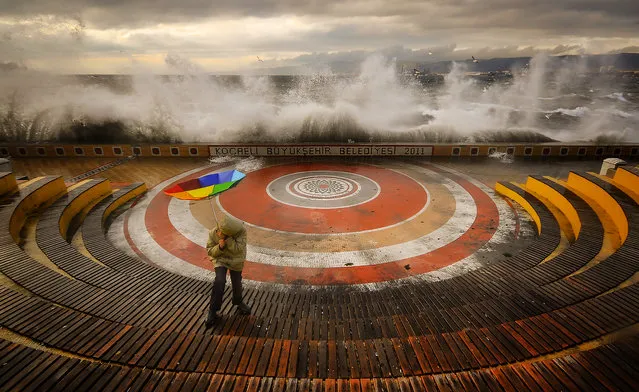
“The Storm”. During I was taking photo with my nephew, the storm came and I caught this beautiful moment. Photo location: Kocaeli, Turkey. (Photo and caption by Aytül Akbaş/National Geographic Photo Contest)
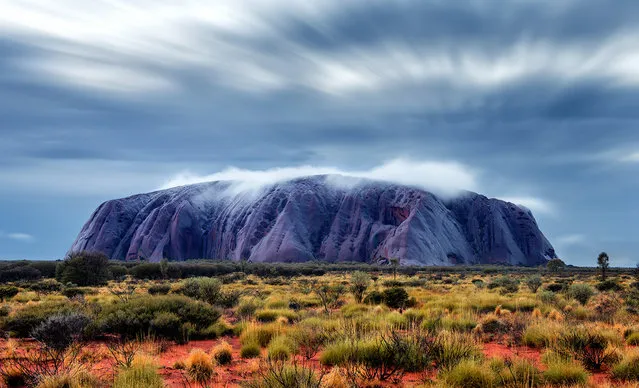
“Blue Uluru”. Rain and a unique weather event transforms the iconic Uluru many shades of blue and purple as water cascades down the many etched crevices carved by time and water. This was taken before sunrise it had just stopped raining after several hours and the low cloud sat low above the rock slowly dissipating within minutes as the wind moved it away. Photo location: Red Centre Northern Territory, Australia. (Photo and caption by Julie Fletcher/National Geographic Photo Contest)
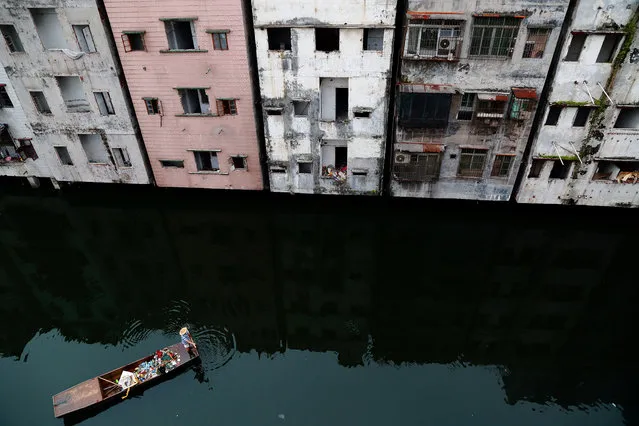
“Guangzhou Xian Village became a Ruined Village after Reconstruction Storm”. Establishing New Buildings Movement starts from 2010 when a large number of beautiful villages were pulled down instead of skyscrapers, which is considered as one part of a modern city. Guangzhou Xian village, in Guangdong Province is a traditional village with a history of 800 years. Demolition work in Xian village sparks heated debate and suspended,finally with a ruined village left. Photo location: Guangzhou Xiancun, Guangdong sheng, China. (Photo and caption by Sheng Zhong/National Geographic Photo Contest)
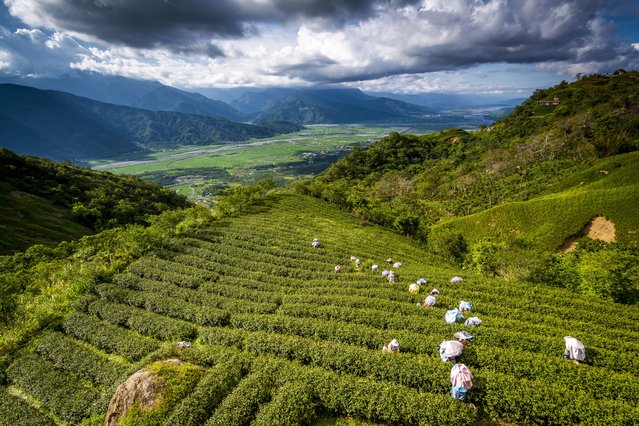
“East Rift Valley Fenglin”. Standing on Liushishi Mountain see the Humanities views of East Rift Valley Fenglin. Photo location: Taiwan. (Photo and caption by 峻彰 許/National Geographic Photo Contest)
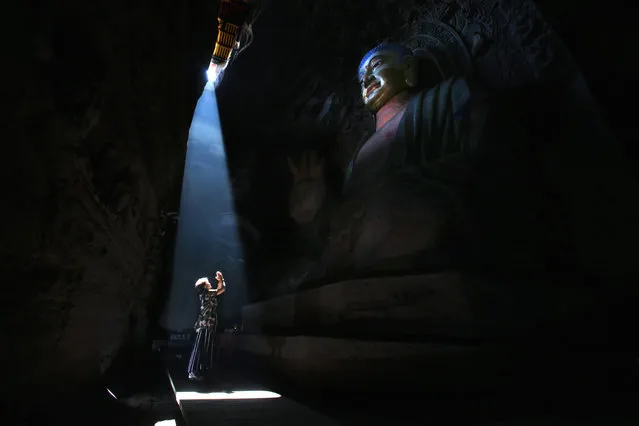
“Buddha's Light at the Silk Road”. July 25, 2014, a tourist is doing a religious worship in Giant Buddhist Grotto, Bin County, Shaanxi Province, China. She is shocked by the giant figure of Buddha and the mysterious beam. The sitting Buddha's figure built in 628 AD is the most magnificent Buddha's figure along the ancient Silk Road. In June, 2014, the Giant Buddhist Grottoes successfully entered the World Heritage list. The grotto was carved in north face of a red sand cliff, therefore, such a mysterious beam could appear only in few time of several special days in summer, which is very precious for the Buddhist believers. Photo location: Giant Buddhist Temple, Bin County, Shaanxi Province, China. (Photo and caption by Bingchen Gou/National Geographic Photo Contest)
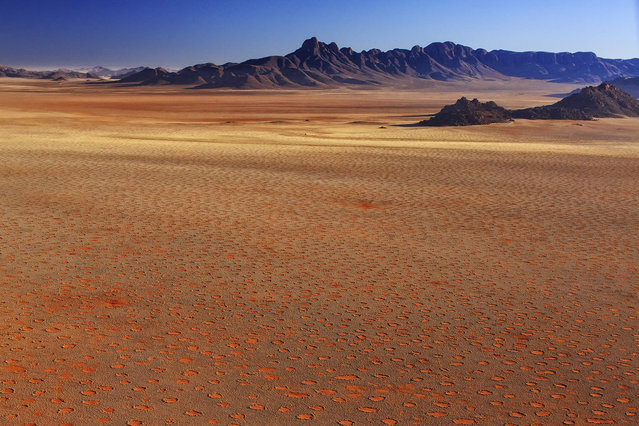
“Fairy circles of Namibia”. This extraterrestrial landscape is called fairy circles, a mysterious natural phenomenon of southwest Africa. They are particularly common in Namibia. They consist of circular patches of barren land, typically around 2-15 meters in diameter, with no vegetation growth, but often encircled with a ring of over grown grasses. Scientists have yet to explain the cause of these circles, although many theories have been put forward, including termites. Photo location: Southern Namibia. (Photo and caption by Yi Sun/National Geographic Photo Contest)
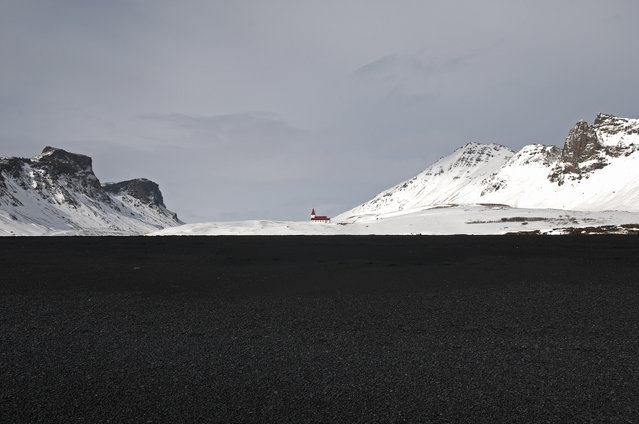
“Iceland Chapel”. A red roofed chapel surrounded by snow covered mountains in Vik, Iceland. The foreground is volcanic black sand. Photo location: Vik, Iceland. (Photo and caption by Adrian Brown/National Geographic Photo Contest)
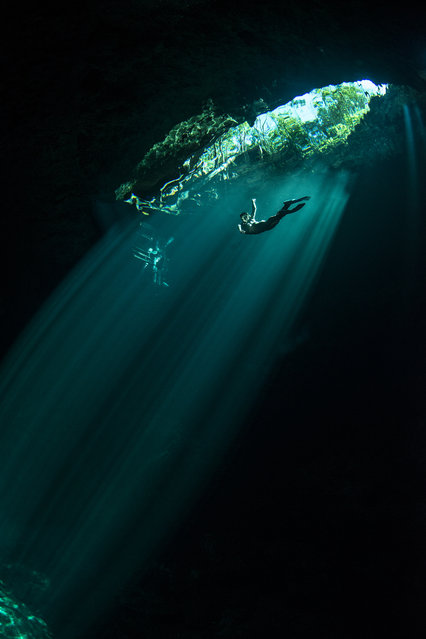
“Diving 'The Pit' in the Mexican jungle”. A freediver reaching back up to the surface in “The Pit”, which is an amazing cenote sinkhole deep inside jungle in the Yucatan Peninsula in Mexico. Cenotes were sometimes used by the ancient Maya for sacrificial offerings. Photo location: the Pit cenote, Yucatan Peninsula, Mexico. (Photo and caption by Danny Kessler/National Geographic Photo Contest)
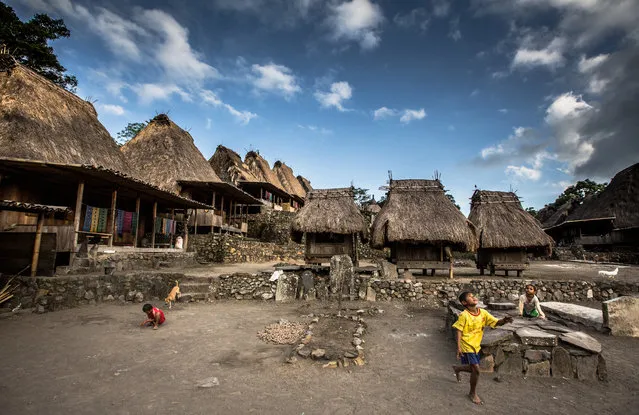
“Bena village”. Bena is a hamlet beautifully settled in a volcanic mountainous area of the island of Flores, Indonesia. It lies at the heart of Ngadha ethnic civilization, which is known for its megalithic culture. The village is furnished with stone monuments, ancestor worship shrines and colorful fabric. Photo location: Flores, Indonesia. (Photo and caption by Rómulo Rejón/National Geographic Photo Contest)
05 Nov 2014 12:37:00,
post received
0 comments
